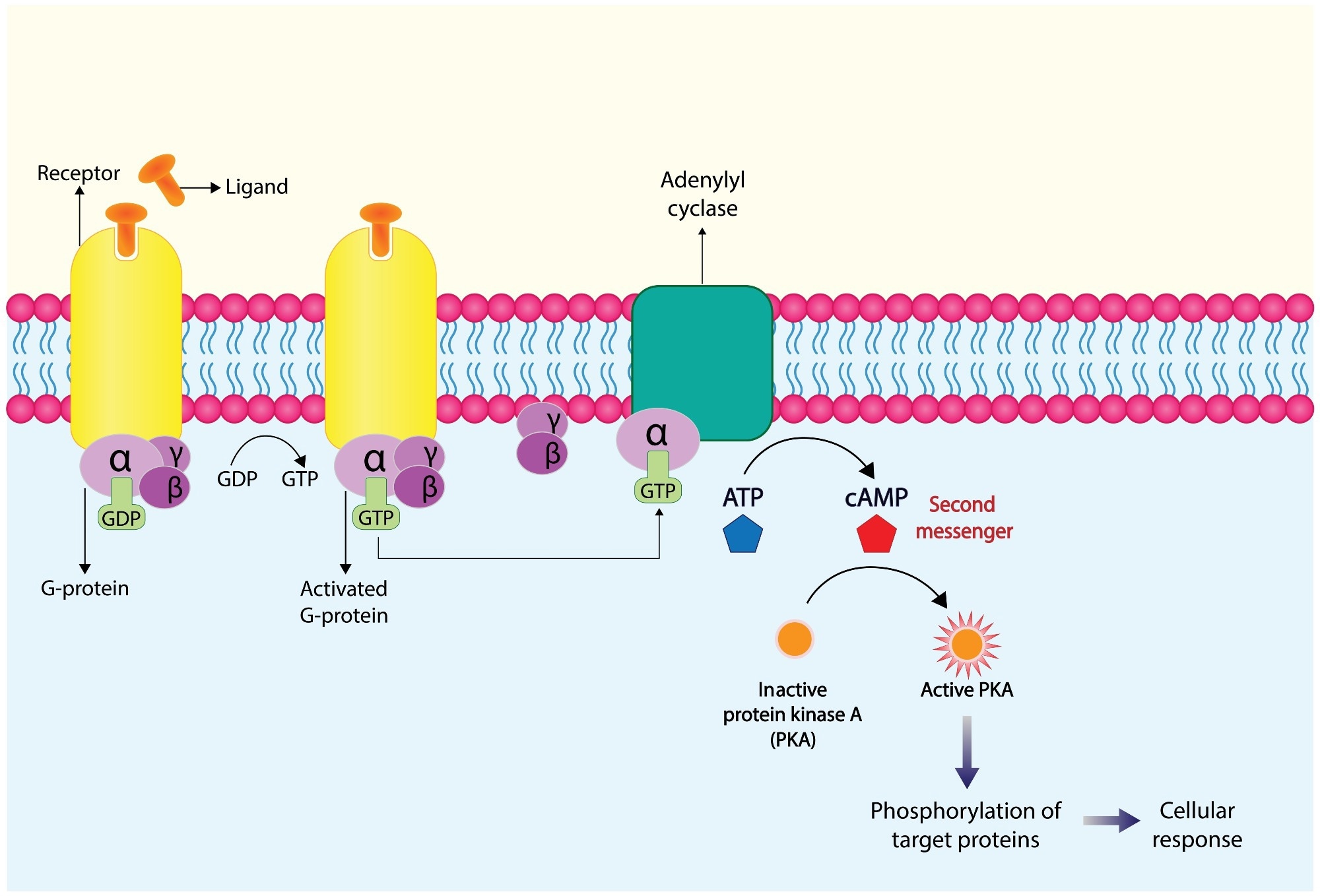G-protein-coupled receptors (GPCRs) play a pivotal role in cellular signaling and have long been a major focus in drug discovery. These receptors regulate a vast array of physiological processes, making them key targets for therapeutic development. Despite significant progress, many GPCRs remain poorly characterized, presenting both challenges and opportunities for the pharmaceutical industry.
In this interview, we explore the latest advancements with Evotec's Principal Scientist in GPCR research and drug discovery. They will share insights into the complexities of working with GPCRs, the innovative assay development strategies they’ve implemented, and the role of cutting-edge biosensor technologies such as waveRAPID in accelerating the discovery of new drug candidates.
Could you give us a brief introduction to GPCRs and their significance in drug discovery?
GPCRs, or G-protein-coupled receptors, represent a crucial family of receptors that are involved in many cellular functions. They respond to various stimuli, including endogenous hormones and neurotransmitters.

Image Credit: Ph-HY/Shutterstock.com
Historically, GPCRs have been one of the most important targets for drug discovery. In fact, around 30 % of all currently marketed drugs target GPCRs. Despite this, a significant number of GPCRs remain orphan receptors, meaning we do not fully understand their function, and have yet to identfy their endogenous ligands.
This presents an exciting opportunity for drug discovery, particularly in developing chemical probes that help to clarify their functions and discover new chemical entities aimed at modulating their activity.
What are some of the key challenges associated with studying GPCRs, particularly in the context of drug discovery?
GPCRs are particularly challenging drug targets due to several factors. First, they often exhibit low activity when immobilized, meaning that the fraction of binding-competent protein is not usually high. This is because wild-type GPCRs are generally unstable once extracted from their natural membrane environment.
GPCRs exist in multiple conformational states, making them highly dynamic proteins with complex binding behaviors that are sometimes difficult to recapitulate using a reductionist approach commonly applied in the early phases of drug discovery. Another challenge is that GPCRs typically need to be embedded in detergent micelles, nanodiscs or synthetic polymers for experiments, which can cause issues with compounds that have solubility problems or are highly amphiphilic/lipophilic.
Could you walk us through the workflow that Evotec has developed for GPCR assay development?
At Evotec, we have established a systematic workflow that allows us to develop direct target engagement assays for GPCRs using biosensor technology. It starts with carefully designing constructs tomaximize chances of success for downstream applications.
Next, we focus on protein expression and purification, ensuring we have high-quality materials for our assays. Once we have the purified protein, we conduct an assay feasibility phase where we evaluate different constructs in small- to mid-scale production to determine which are most suitable for assay development.
These stages are iterative, refining parameters until we identify the key aspects that ensure the desired outcome. Once the binding assay is developed, it can be used for various applications, including compound profiling, hit validation, fragment screening, mapping binding sites, and even thermodynamic studies.
What role does optical biosensor technology, particularly waveRAPID, play in studying GPCRs?
Optical biosensors, and specifically the waveRAPID technology, have significantly advanced our ability to study GPCRs. Traditional methods often require multiple concentrations of a compound to be injected over time to generate a dose-response curve.
In contrast, waveRAPID allows us to inject a single concentration and record the time-resolved response dynamically, enabling us to resolve the kinetics of interactions in a much more efficient manner.
This is particularly useful when dealing with GPCRs, where the binding dynamics can be complex. With waveRAPID, we can assess the full kinetics profile of binding with greater confidence; focussing on the kinetics of the ligand-target dissociation process that is less affected by the heterogeneity observed during the injection phase, even when dealing with low signals.
Can you explain how Evotec designed and executed the fragment screening process using waveRAPID?
Our initial proof-of-principle focussed on a well-characterized GPCR for which many tool compounds were available, the Adenosine receptor A2a (hA2aR). We immobilized wild-type A2AR GPCR on an NTA-sensor chip surface and tested molecules with different mechanisms of action - agonists, antagonists, and fragment-like compounds - to validate the protein and the assay. The binding profiles of these molecules were analyzed using both waveRAPID and traditional multi cycle kinetic (MCK), allowing us to characterize their kinetic parameters and validate full translation of MCK into waveRAPID.
Then we carefully selected a tool compound, ANR94, which had an ideal kinetic profile and molecular weight to serve as a positive control.
Once the assay was fully set-up, we conducted a pilot screen of 700 fragments. The results were analyzed through a kinetic plot that considered both association and dissociation rates to easily visualize binding affinity.
What were the key findings from the pilot study, and how did you validate the results?
The pilot screen identified 16 fragments as potential binders, with an overall hit rate of around 2.3 %, which aligns with what we typically expect from fragment screening on this target class. To validate these hits, we took a more traditional approach using MCK binding assays, where we injected multiple compound concentrations to confirm dose-response binding. Then, we closely inspected the saturation curve and binding to relevant off-targets, complementing kinetic fit with a steady-state data plot.
Out of the 16 initial fragments, nine were confirmed as selective binders to the A2A GPCR. Interestingly, when we compared the kinetic parameters obtained from waveRAPID to those from multi-cycle kinetics we found strong correlations, further reinforcing the validity of our screening method.
What are the potential implications of your findings for the future of GPCR drug discovery?
Our findings demonstrate that kinetic fragment screening using waveRAPID is a highly effective methodology for identifying new GPCR-targeting compounds. The ability to quickly and reliably screen large fragment libraries means that we can accelerate the early stages of drug discovery.
The kinetic data we generate provides valuable insights into binding interactions, which can guide lead optimization efforts. Given the number of orphan GPCRs that remain unexplored, this approach could be instrumental in unlocking new therapeutic targets.
What are the next steps for Evotec in this area of research?
Moving forward, we plan to expand our screening efforts to additional GPCR targets, particularly orphan receptors. We also aim to integrate waveRAPID screening with complementary technologies to further refine our understanding of binding kinetics and structure-activity relationships.
Another key focus will be optimizing assay conditions to minimize non-specific binding and further improve reproducibility. Ultimately, our goal is to continue advancing GPCR drug discovery by developing innovative, efficient, and reliable screening methodologies.
About Edoardo Fabini
Edoardo Fabini is a Principal Scientist at Evotec U.K., where he leads a team dedicated to developing biophysical assays within the Protein Sciences department. He holds a PhD in Biochemical and Biotechnological Sciences from the University of Bologna and has conducted visiting PhD and postdoctoral research at BMC, Uppsala University. Edoardo has extensive expertise in biophysical and biochemical methods, including SPR, GCI, and DSF, with a background in mechanistic enzymology and pharmacology. Prior to joining Evotec, he worked at Nerviano Medical Sciences, contributing to the discovery of kinase inhibitors and PARP modulators to support oncology drug discovery programs. In his current role, Edoardo bridges protein biochemistry, biophysics, and structural biology, providing essential support across various drug discovery programs. He specializes in designing and implementing custom biophysical assays for challenging targets, with a particular emphasis on membrane proteins such as GPCRs, SLCs, and ion channels.
About WAVEsystem (A Malvern Panalytical brand and creoptix technology)
Following integration in January 2022, Creoptix is a Malvern Panalytical brand. The team is headquartered in Wädenswil at the foot of the lake of Zurich in Switzerland, with US offices in the Boston area.
Accelerate discovery
WAVEsystem enables life scientists to accelerate discovery by providing cutting-edge tools for molecular interaction analysis, with a focus on next-generation bioanalytical instruments for drug discovery and life sciences for both industry and academic research.
High sensitivity and resolution
Based on its proprietary biosensor, microfluidics and software technologies, WAVEsystem provides exceptionally high sensitivity and resolution to study real-time biological interactions involving fragment, small molecules, peptides, membrane proteins, biologics and other molecules even in crude reaction mixtures and biofluids like undiluted serum and plasma.
Breakthrough level of kinetics analysis
At the core of WAVEsystem is Grating Coupled Interferometry (GCI) technology. GCI technology puts a breakthrough level of kinetics analysis at your fingertips by pushing the boundaries of affinity range and sample compatibility. The system’s exceptionally high data quality, sample compatibility and automated software facilitates drug discovery and enable new inroads into R&D. Malvern Panalytical also offer supporting chips and software for the instrument.